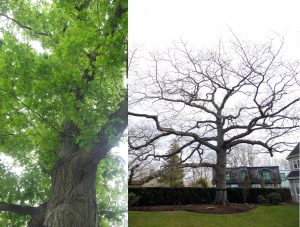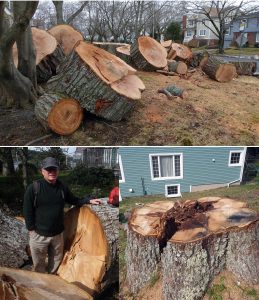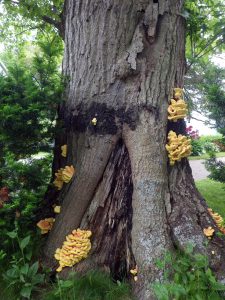 Halifax hosts some magnificent red oaks, readily distinguished at a distance in winter by their distinctive gnarly profiles. When I see one cut down, I like to count the rings and have been surprised at the relatively young age of quite large trees. Several cut trees 2.5-3 ft wide (76-91 cm) I have looked at over past years were barely over or were under 100 years old.
Halifax hosts some magnificent red oaks, readily distinguished at a distance in winter by their distinctive gnarly profiles. When I see one cut down, I like to count the rings and have been surprised at the relatively young age of quite large trees. Several cut trees 2.5-3 ft wide (76-91 cm) I have looked at over past years were barely over or were under 100 years old.
That’s a bit younger than my record so far, 216+ years for a tree cut in 2012 that was 47 inches (120 cm) diameter at about 3ft height; heartwood at the base was quite rotted. The owner of the tree I saw yesterday said it had a lot of dead branches, so it had to be cut. I suspect windy Nova Scotia is quite hard on red oaks, broken limbs opening the trees up to fungal infection, so they don’t approach the extreme ages reported for red oak, circa 500 years.
I have more than a passing interest in old oaks related to fungal infections: for 4 of the last 5 years, I have found some big chicken-of the-woods mushrooms (Laetiporus sulphuretus) on old oaks. They are quite unmistakable, and a culinary delight. (The exceptional year with no sightings was 2016 when we had extreme drought.)I have seen two other large “polypore” mushrooms on old oaks in Halifax, but only once in each case: Hen of the Woods (Grifola frondosa) and Berkeley’s polypore (Bondarzewia berkeleyi). (View Pics) Both are, like Laetiporus sulphuretus, parasitic on oak and cause decay. Both are also edible but I haven’t yet sampled them. They are all quite striking in appearance and where they are quite prominent (as in the photo at left), I leave them for others to enjoy.


